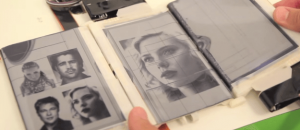You know all those silly movies and cartoons about bionic humans with cybernetic body parts? Yeah well, apparently it wasn’t too far off from the truth.
A team at Princeton University has created a unique ear that can “hear” various radio frequencies, which means the technology could add to our sense of hearing in the future. The tissue used to shape the ear, and the internal audio antenna, were fused together with the help of an “off-the-shelf” 3D printer.
Thanks to 3D printing the researchers were able to combine elements of biology and technology in order to create something truly remarkable. It really makes you wonder what else they will come up with next. No seriously, my imagination is floating high in the sky right now- and no I didn’t take anything.
The bionic ear includes a coiled antenna that is housed inside the main cartilage section, while two wires extend from the base of the organ also known as the “cochlea”. It’s designed to work just like a hearing aid, in that the antenna is connected to the user’s nerve endings. This basically improves hearing and in many cases can restore someone’s hearing.
Earlier in February, a team at Cornell University announced a similar project that involved 3D printed ears called ‘pinna.’ Needless to say the ears were very realistic. The Cornell team used collagen from rat tails, and cartilage cells from cows to create a unique hydrogel. The gel was then placed into a mold, whereupon the cells were able to grow and generate a realistic ear. The collagen actually provided structure for the cells during the growth process.
While the Princeton ear is definitely cool, it’s not advanced enough to be used by humans just yet. Currently, it’s only able to detect radio waves, and the researchers have a lot more work to do to get the bionic ear working properly. Their ultimate plan is to introduce support for acoustic sounds, which will obviously provide a more natural audio stream for users.
[via Princeton University, Gizmag]

 Email article
Email article




